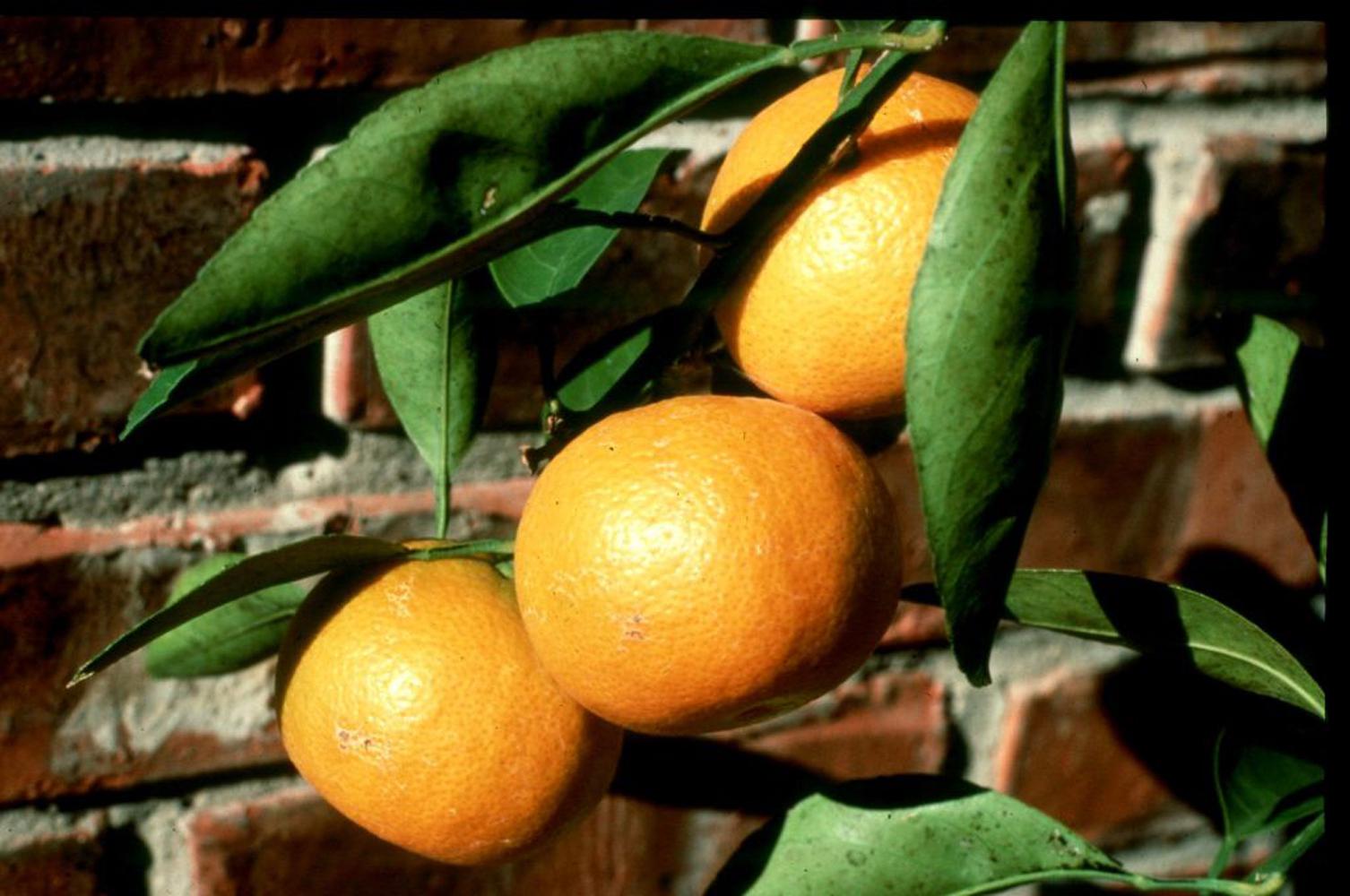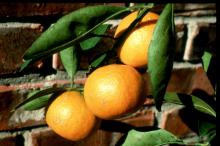Information Possibly Outdated
The information presented on this page was originally released on November 4, 2004. It may not be outdated, but please search our site for more current information. If you plan to quote or reference this information in a publication, please check with the Extension specialist or author before proceeding.
Container citrus supplies beautiful, delicious results
By Norman Winter
MSU Horticulturist
Central Mississippi Research & Extension Center
Last week I had the opportunity to help with a plant auction at a field day in Lucedale. One of the plants that caught everyone's fancy was a fruit-laden Improved Meyer lemon. In fact, it went for a pretty price. I wanted it, too.
I have been growing one that has to be close to 20 years old now. That's a long time to grow a plant in a container, and it's really time for me to start another because fruit production has declined. I bought it when I lived in Bryan, Texas, then moved it to Shreveport, La., Arlington, Texas, Mount Olive and three homes in the Brandon area. Doesn't exactly sound like the Citrus Belt, does it?
I have often wondered why everyone doesn't grow container citrus. We all have some kind of plant we protect during the winter. You probably protect a ficus or a hibiscus. For years now I have simply rolled them in a garage when cold weather came. For two years I had only a carport. Last year, I left them up against the house under the overhang on my deck.
We can grow a variety of citrus, satsumas being the highest in quality and easiest to grow for homeowners. It is also the most cold-tolerant. Homeowners in South Mississippi could even try them in the landscape.
Still, the trees must be protected from severe cold, preferably by bringing them indoors to an area that will remain above 26 degrees. In the Jackson area, a container-grown satsuma can probably remain outdoors for 350 days of the year. Obviously, some years are colder than others.
If you think about it, it doesn't seem like too much work to protect one of the most delicious of all citrus, one that is easy to peel and has gorgeous leaves and some of the most fragrant flowers.
The containers do not have to be huge. I prefer to start a satsuma in a 2-gallon pot and work up to a 15- to 20-gallon size over the next few years. I have grown them successfully in whisky barrels that I put rollers on. After the shortage of barrels a few years ago, I switched to terra cotta pots that I move with a hand truck or dolly.
Fill your container with a loose, open potting mix featuring sphagnum peat moss. The final level of the potting mix should be 1 to 4 inches below the container rim to allow for easy watering. For a stunning display, plant one satsuma in the middle, then line the perimeter of the container with transplants of flowering annuals.
Next, follow label directions in applying a full rate of quality, slow-release fertilizer formulated specifically for container use. It should contain both macro- and micro-nutrients. An application every three or four months should result in deep green, mature foliage that indicates adequate nutrition.
Citrus thrives in full sun, so place your plant where it will receive direct sun for eight to 10 hours each day, even during the summer months.
Satsumas are wonderful because of their cold tolerance and great taste, but you may want to try other citrus as well. Good selections would be the Meiwa kumquat and Improved Meyer lemon, an orange-lemon hybrid. I enjoyed the Mexican lime the most because I like them in sweet tea. It is the most cold-susceptible, but you can't beat its juiciness.
It is getting close to harvest time now for most of us growing citrus. However, I just saw gorgeous plants for sale at a nursery. So if you are not quite ready to start protecting from freezing weather, wait until spring to plant. On the other hand, keep your eyes open when you go pansy shopping. You may be surprised by what you find.




